#graywacke
Explore tagged Tumblr posts
Text

Statue of Prince Tjau Seated on the Ground
This distinctive statue depicts Prince Tjau seated in an asymmetrical pose different from the usual cross-legged pose of a scribe at work. His right leg is pulled up in front of him and his left folded beneath each hand is placed on a knee, indicating that he is at rest. He is dressed in a plain kilt and wears a mid-length, flaring wig that leaves his large ears exposed.
His extremely large, protruding eyes and thick, rectangular mouth and the very pronounced folds on either side of his nose combine to produce a countenance that is typical of the 6th Dynasty style.
Old Kingdom, 6th Dynasty, reign of Merenre I, ca. 2345-2181 BC. Graywacke, height: 34.5 cm. From Saqqara necropolis. Now in the Egyptian Museum, Cairo. CG 120
Read more
71 notes
·
View notes
Text

The Kensington Runestone, a rectangular slab of graywacke stone inscribed with runes, was discovered in 1898 near Kensington, Minnesota. The inscription suggests that Scandinavian explorers might have reached the area as early as the 14th century, predating Christopher Columbus by over a century. The text reads: "8 Goths and 22 Norwegians on an exploration journey from Vinland very far west. We had camp by two skerries one day's journey north from this stone. We were fishing one day. After we came home, found 10 men red with blood and dead. AVM (Ave Maria) save from evil. Have 10 men by the sea to look after our ships, 14 days' journey from this island. Year 1362." This suggests a Norse expedition that met with tragedy, with ten men being massacred. Since its discovery, the Kensington Runestone has been at the center of a heated debate among scholars, historians, and archaeologists.
Some argue that it is a genuine medieval Norse artifact, indicating that Vikings might have explored much further into North America than previously believed. They support their claims with linguistic and runological analyses. On the other hand, critics question the stone's authenticity, pointing to signs of modern carving techniques and inconsistencies in the language and grammar compared to known medieval Norse texts. They suggest the possibility of a hoax or deliberate forgery. Despite extensive studies and ongoing debates, no definitive conclusion has been reached. The Kensington Runestone continues to captivate and divide, with both supporters and skeptics passionately defending their viewpoints.
33 notes
·
View notes
Text
Today on Throwback Thursday: Adam Sedgewick
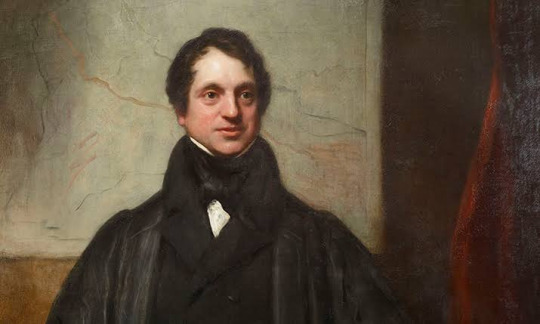
A British geologist and an Anglican priest, Sedgewick would reinvent how we looked at geologic time. He was born in 1785 in Yorkshire to an Anglican vicar, and went to the University of Cambridge for math and theology (how he ended up in geology is beyond me).
At some point he began to study the rocks of the British Isles and Europe where he came up with a classification system for Cambrian rocks as well as Carboniferous and Devonian rocks. In fact, he got involved in something called the "Great Devonian Controversy"
Basically, we had this guy, Henry de la Beche
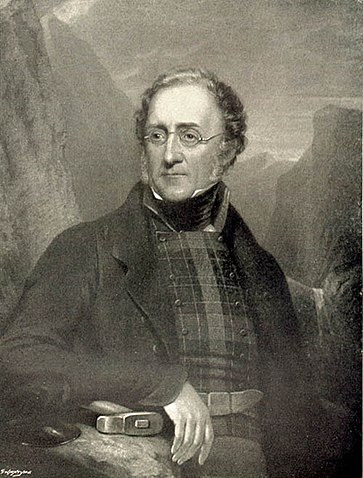
who had these plant fossils in a greywacke that he believed was older than the Carboniferous plant fossils also found in a graywacke (don't worry about what a graywacke is, just know it's a rock) and that the method of dating used was invalid due to the different depths these fossils were found at.
Then, we had this other guy, Roderick Murchison,

who said, "no, you're doing wrong, Sir." He believed they were near the top of the strata just like the other fossils.
Eventually, the de la Beche agreed with him but said there was still insufficient data because a red sandstone layer was missing from in between. Sedgewick hopped in to help Murchison and the two actually found a similar layer in Russia and thus the Devonian Period was born.
Sedgewick also made some advancements with metamorphic rocks. He was the first to recognize the difference between stratification,

jointing

and slaty cleavage.

11 notes
·
View notes
Text
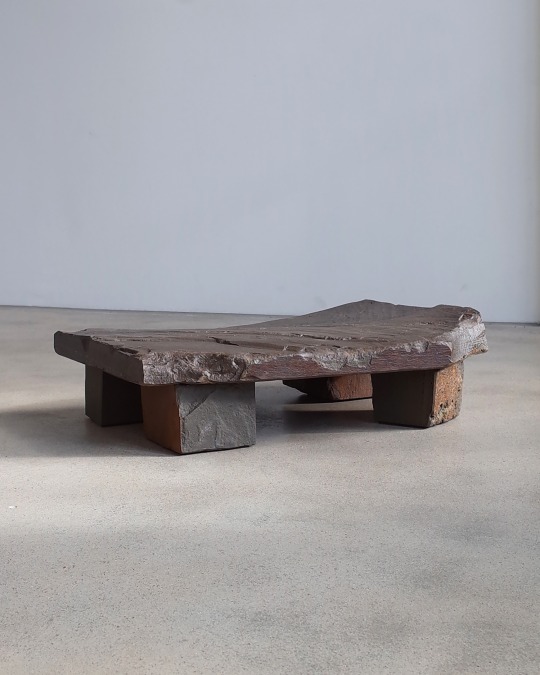
Graywacke Series is a minimalist furniture collection designed by Cologne-based designer Carsten in der Elst, presented at Stockholm Design Week. This collection includes a blend of pieces from recent projects, revised items, and exclusive new works in stone created specifically for the fair.
#minimalism#minimal#minimalist#minimal furniture#minimal bench#minimalist bench#minimal design#leibal
9 notes
·
View notes
Text
#FishFriday:
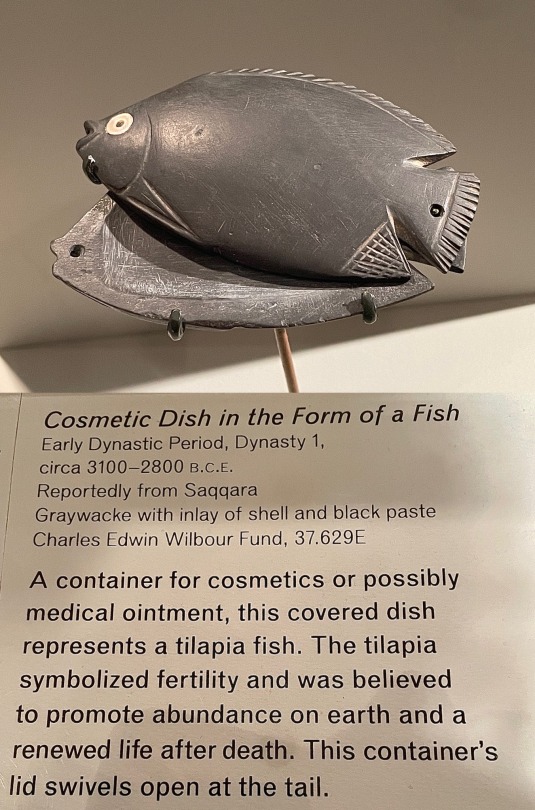
Cosmetic Dish in the Form of a Fish
Ancient Egypt, Early Dynastic Period, Dynasty 1, c. 3100-2800 BCE
Reportedly from Saqqara
Graywacke w/ inlay of shell & black paste
Brooklyn Museum
“A container for cosmetics or possibly medical ointment, this covered dish represents a tilapia fish. The tilapia symbolized fertility and was believed to promote abundance on earth and a renewed life after death. This container's lid swivels open at the tail.”
24 notes
·
View notes
Text
Shape and Form
“Ah, Nerdanel, there you are.”
Nerdanel looks up from the block of greywacke, chisel and mallet falling silent.
Indis steps through the beaded strings in the doorway to Nerdanel’s stoneroom.
Today, she’s wrapped herself in a soft pink and green gossamer skirt with matching open front bodice over an airy shift—a fashionable choice for a warm summer day. The queen was always at the peak of fashion; a creator of it, Nerdanel might go so far as to suspect, given the way preferences in Tirion tend to follow where Indis leads. She’s been mixing Noldor sensibilities with more Vanya attire as of late and time will tell if it catches on.
“When your housekeeper told me you had gone out, I thought he might have meant you left Tirion on some errand,” Indis says. She trails a finger through the stone dust that settled on Nerdanel's drafting desk in the time since she's last cleaned.
“I only came here to work,” Nerdanel says, folding her arms to rest against her leather apron and watching as the King's wife inspects her space with keen eyes.
“Yes,” Indis finally says. “It is nice to have something to do outside of the palace, on occasion.”
Without looking at Nerdanel, she strolls over to a bench pushed up against the wall which holds a row of half-began, child-sized busts.
“Who are these?” She asks, curiously running the tip of a forefinger over the vague impression of a round face.
“My children,” Nerdanel answers, hands itching to push the Queen's away, tongue twisting with the effort of not telling her to keep away from her children her art.
“They will be beautiful,” the Queen judges. Her gaze moves across the rest of the room, taking in the tools, clay mock ups and stone blocks.
Nerdanel stays where she is, one hand resting on the speckled graywacke, the other holding the mallet and chisel. She doesn't know what to make of Finwë's wife. Indis has never been overtly disagreeable, but neither has she been particularly warm. She'll carry small talk and ask after Maitimo, Makalaurë, and baby Tyelkormo, but they see little of each other outside of formalities.
Perhaps that is expected. Fëanáro and Indis are distant, their relationship strained by old hurts, and she has her own children and grandchildren. There is nothing unnatural in her lack of interest in Nerdanel or her children, only…
How can she not know?
Indis has a keen mind and an eye for detail. The king did not marry her for her beauty alone. How can she not know what her husband does?
“Thank you,” Nerdanel finally says with little warmth. “May I help you with something?”
Indis removes her hands from the bust. “The Celebration of Western Light is approaching,” she says. “Fëanáro’s household should participate in the planning and hosting of festivities. Can I expect to see you at the committee’s next meeting?”
All perfectly polite and proper to ask but underneath it there is something else, Nerdanel is certain. Indis hadn’t needed to come all this way to deliver the invitation personally: a note or letter would have sufficed. At the very most, this could have waited until Nerdanel was back in her family’s wing of the palace. There was no reason for Indis to come all this way—unless she wanted to meet out here? To speak somewhere where there was no risk of being overheard by sharp ears attached to tattling tongues?
But why? Not a single phrase out of her mouth would have raised eyebrows at the court.
“Of course,” Nerdanel says with a small bow, more of a head bob. “I will be there.”
Why did Indis want to meet her out here?
“Good,” Indis says, turning to leave. She pauses on the way out, reaching out a hand to trail one fine finger over a nearly finished statue of Varda in miniature near the door. “I might commission something of this sort when you are not so busy.”
She leaves before Nerdanel can respond to that.
The sculptor stands in the middle of her work room, tools held loosely in her hands for some time after that.
What does it mean?
#beep beep more nasty finwe as threatened#though finwe is very absent in this#guess he's also an absentee father#nerdanel#indis#nasty finwe au#the silmarillion#grimwing writes
5 notes
·
View notes
Note
which rock word has the best artistic pizzazz? I’m a fan of “striation” personally, which I don’t even think is technically a rock word, but the hell do I know
Anyway, actual rock question: how come some rocks by the ocean are like, weirdly porous? they’re just like, 98% hole and 2% rock (I think I’m talking about volcanic porous rock, specifically)
(bonus question, because it’s a Friday: what is your favorite geologist pun?)
"Striation" is a rock-related word! Striations refer to these stripey things present in plagioclase, a kind of feldspar! They're very useful for distinguishing plagioclase from orthoclase, a different kind of feldspar that lacks striations but sometimes has exsolution lamellae (wiggly worm-looking things). The picture below is a close-up of the striations.
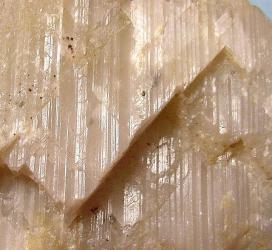
In terms of pizzazz-y rock-related words...well I guess "exsolution lamellae" is pretty good. But there's another word that comes to mind, and it's one that my roommate pointed out is Quite Excellent back when we were in college and they were helping me study for geology exams.
Graywacke!
Pronounced "gray-wacky", it refers to a specific kind of sandstone. Here's a picture of a graywacke. It might look just sort of like a rock, but that doesn't make it less pizzazz.
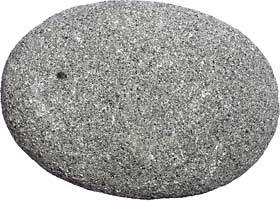
(And for shiggles, here's a picture of some exsolution lamellae in some orthoclase.)
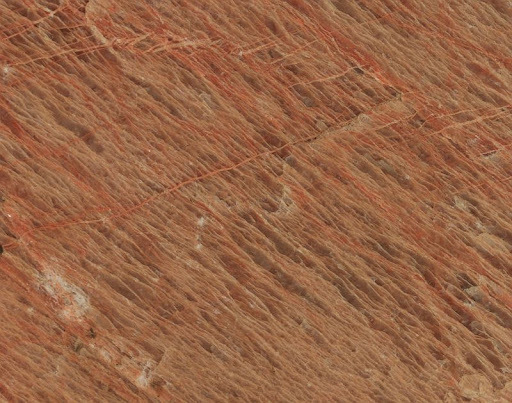
As for your question about porous rocks by the ocean, I have an answer!
You are correct that those particular rocks are volcanic. Multiple kinds of extrusive igneous rocks (rocks that form from lava cooling on the Earth's surface) can have those pores in them, but there are two particular kinds of rocks that always have that texture: pumice and scoria.
We refer to that porous texture as a vesicular texture; the pores and gaps in the rock are vesicles. Extrusive igneous rocks develop a vesicular texture when they cool so quickly that gas bubbles trapped inside the lava cannot escape before the rock fully cools. Pumice and scoria in fact cool so quickly that the lava doesn't even have time to form crystals! That's also the case for obsidian, aka volcanic glass, though obsidian doesn't have that vesicular texture to it.
Fun fact: Pumice is so vesicular, so full of these trapped gas bubbles, that it will float in water! Scoria, though also vesicular, is denser and thus will not float.
Here's a picture of some pumice for you.

And here's some scoria.
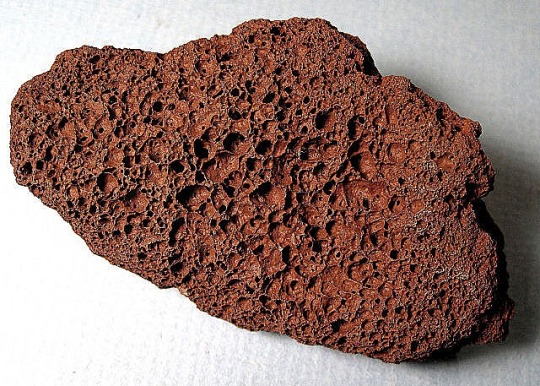
Now, my favorite geology pun...
Honestly, I'm very fond of using "schist" (a very sparkly metamorphic rock) instead of "shit". Though that's definitely at least in part due to the fact I didn't swear until halfway through college lmao. I had to get creative with my euphemistic swears.
(And here's some schist for you to admire. I specifically pulled up garnet schist, you're welcome.)

#the word for the sparkly shiny thing schist has going on btw is ''schistosity''#there are a lot of v fun words in geology#but people get distracted by ''cleavage'' and don't pay attention to anything else :/#thank you so much for the geology ask I really enjoyed getting it!#my current job isn't in geology so I miss discussing rocks and whatnot#ask#Anonymous
9 notes
·
View notes
Note
I will now recite the rocks in alphabetical order:
adamellite
amphibolite
andesite
anorthosite
anthracite
appinite
aphanite
arenite
argillite
arkose
basalt
basanite
blueschist
biomicrite
biosparite
boundstone
breccia
carbonatite
cataclasite
chalk
chert
claystone
clinopyroxenite
coal
conglomerate
coquina
dacite
diamictite
diatomite
diorite
dolomite
dunite
eclogite
essexite
evaporite
flint
foidite
gabbro
gabbronorite
gneiss
gossan
granite
granodiorite
granophyre
granulite
graywacke
gritstone
greensand
greenschist
harzburgite
hornblendite
hornfel
hyaloclastite
icelandite
ignimbrite
ijolite
itacolumite
jadeitite
jasperoid
jaspillite
kenyte
kimberlite
komatiite
lamproite
lamprophyre
larvikite
laterite
latite
lherzolite
lignite
limestone
litchfieldite
litharenite
llanite
luxullianite
mangerite
marble
marl
metapelite
metapsammite
migmatite
minette
monzodiorite
monzogranite
monzonite
mudstone
mylonite
nepheline syenite
nephelinite
norite
novaculite
obsidian
oil shale
oolite
pantellerite
pegmatite
peridotite
phonolite
picrite
porphyry
phyllite
pseudotachylite
pumice
pyrolite
pyroxenite
quartzarenite
quartzite
rhyolite
sandstone
schist
scoria
shale
siltstone
serpentinite
shonkinite
skarn
slate
suevite
soapstone
syenite
syenogranite
taconite
tephrite
teschenite
theralite
tholeiite
tonalite
trachyte
travertine
tuff
turbidite
urtite
variolite
wackestone
websterite
wehrlite
whiteschist
xenolith
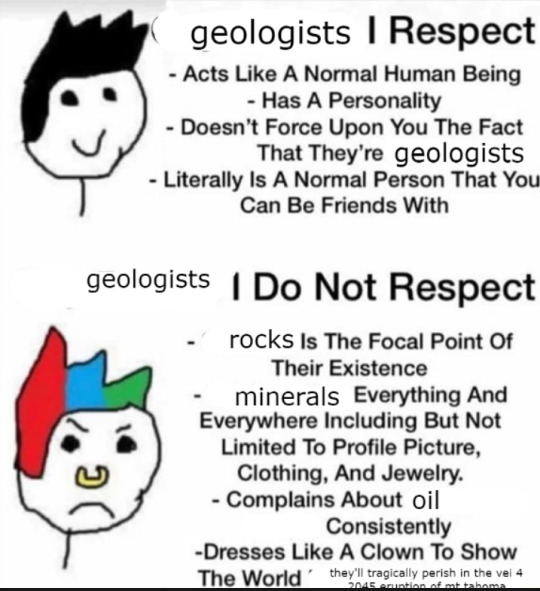
3 notes
·
View notes
Text
Day Brightener - History Most Quite Interesting
The Kensington Runestone is a controversial artifact that was discovered in 1898 near Kensington, Minnesota, in the United States. It is a rectangular slab of graywacke stone with runic inscriptions carved into its surface. The inscription on the stone suggests that Scandinavian explorers reached the area in the 14th century, pre-dating Christopher Columbus’ arrival in the Americas.“8 Goths and…

View On WordPress
0 notes
Text

Statue of Amun with features of Tutankhamun
New Kingdom, late 18th Dynasty, ca. 1332-1323 BC. Now in the Penn Museum, Philadelphia. E14350 Photo: Tom Jenkins Standing graywacke statue of Amun, preserved from the knees up. Amun wears a short kilt fastened with a tyet amulet, a broad collar. The tall plumes of his crown are missing. In his hands, he holds two ankh symbols. The statue is an indication of Egyptian religion reverting to traditional presentations connecting the king and the god Amun at the head of the pantheon. In this statue, the god Amun typically appears as a man wearing a tall, double-plumed headdress. His tall headdress is missing from this statue, but his crown bears traces of gilding.
Read more
210 notes
·
View notes
Photo


An Egyptian Basalt or Graywacke Jar Predynastic Period (Naqada II)/1st Dynasty, circa 3500-2900 B.C.
Of ovoid form with offset foot, tubular handles, and everted rim. Height 12.7 cm.
#An Egyptian Basalt or Graywacke Jar#Predynastic Period#Naqada II)/1st Dynasty#ancient artifacts#art#artist#art work#art news#history#history news#ancient history#ancient culture#ancient civilizations#archeology#archeolgst#$ancient egypt#egyptian history
18 notes
·
View notes
Text



Seated Scribe, 1391-1353 B.C.E
Graywacke (stone)
Egyptian
------------------------------------------
The scribe sits in quiet contemplation, his face turned down toward the unrolled papyrus in his lap. Ancient Egyptians considered scribes to be the most important part of the civil administration because of their ability to read and write. The minute detail of the figure's elaborately curled wig and pleated shirt reveals the artist's skill in stone carving.
-Description from the Detroit Institute of Art
104 notes
·
View notes
Photo
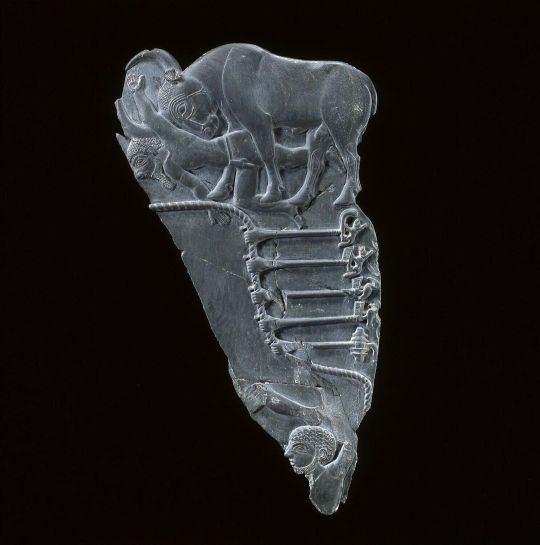
Makeup Palette with Bull and Trampled Enemies Description: Trampling Bull with trampled man, divine emblems with arms holding a rope (two jackals 𓃥, ibis𓅞, falcon 𓅃, and Min symbol 𓋊), and a fortress with a lion inside. Etat de l'oeuvre : fragment Period: Pre-dynastic (3,200-2,700 BC) Dimensions Hight: 26.5 cm ; Width : 14.5 cm Materials and Technique Matériau : Graywack Technique : Raised Relief @museelouvre ID: E 11255 𓋹𓎬𓋹𓎬𓋹𓎬𓋹𓎬𓋹𓎬𓋹𓎬𓋹𓎬𓋹𓎬𓋹𓎬𓋹𓎬𓋹𓎬𓋹𓎬𓋹𓎬𓋹𓎬𓋹𓎬𓋹𓎬 @egyptologylessons 𓋹𓊽𓋴𓆖𓎛𓇳𓎛 © 𓊁𓊁𓊁𓊁𓊁𓊁𓊁𓊁𓊁𓊁𓊁𓊁𓊁𓊁𓊁𓊁𓊁 #Ancientegypt #ägypten #egyptology #egypte #egitto #埃及 #مصر #egipto #이집트 #louvre #louvremuseum #palette #bull #lion #enemies (at Louvre) https://www.instagram.com/p/CnHz1uzOdyz/?igshid=NGJjMDIxMWI=
#ancientegypt#ägypten#egyptology#egypte#egitto#埃及#مصر#egipto#이집트#louvre#louvremuseum#palette#bull#lion#enemies
22 notes
·
View notes
Photo

Chevron Folds Recumbent chevron folds in Earlyn Pennsylvania graywacke and shale,of the Bude Formation at Millook Havem on the north coast of Cornwall, southwestern Britain,
#Tectônica#Tectonica#Tectonic#Geology#Geophysics#Geodesia#Geodesy#Astrophysics#Rochas#Rocks#Geologia#Geofísica#Geofisica
8 notes
·
View notes
Photo

Ostrich-shaped palette
graywacke
Egypt, Predynastic period, 4th millennium BCE
“In Egyptology a palette is a flat stone plate used for grinding dry cosmetic paints for eyes. In Ancient Egypt eye paint had both practical and magical properties – it not only made the eyes more attractive, but also was believed to protect them from evil forces and eye diseases that were widely spread in Egypt due to wind, dust, bright sunlight, and insects. The collection of the State Museum of Fine Arts features palettes shaped as a fish, a bird (falcon), a turtle, an elephant, a boat, and a shield all created in the silhouette technique. The internal details are poorly developed or are laconically drafted with carved lines (as, for example, in the fish-shaped palette). Eyes are often encrusted with shells or bone. Some palettes had a hole for hanging.”
Pushkin Museum
357 notes
·
View notes
Text
graywacke sounds like some british town where the water is poisoned
5 notes
·
View notes